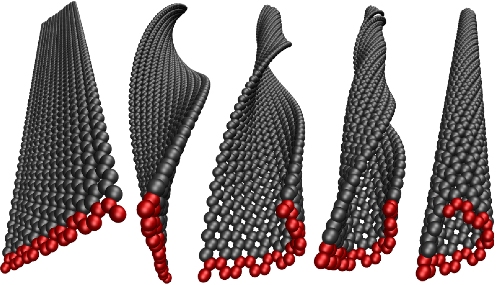Scientists from Harvard University, US and the NanoScience Center from the University of Jyväskylä, Finland have identified a new method for producing nanomaterials. The research has been funded by the Academy of Finland.
 "A cluster of microsponges made of long strands of folded RNA, as seen by scanning electron microscopy. Image: Hammond laboratory "
"A cluster of microsponges made of long strands of folded RNA, as seen by scanning electron microscopy. Image: Hammond laboratory "
In this research, narrow and lengthy graphene nanoribbons were twisted to produce carbon nanotubes using computer simulations. Espoo-based Finnish IT Centre for Science (CSC) provided the computers for the research.
The simpler strategy of twisting the ends of a backpack’s strap results in a strong mechanism on nano, micro and macro scales.
The experimental control, which was not possible before, can be achieved by using this method. A variety of carbon nanotubes can be produced using this method including encapsulation of molecules into the tubes and fabrication of tubules from nanoribbons.
Although the rolling mechanism remained undiscovered, carbon nanotubes have been called as ‘rolled-up graphenes’ for over 20 years. Now, atom-by-atom growth mechanism is being used for the production of nanomaterials, including nanotubes.
The findings have been published in Physical Review B journal, with an “Editor's Suggestion" status. It has also been given importance in the Physics journal of American Physical Society.
The Academy of Finland provides funding for deserving scientific researches and acts as a strong basement for research in Finland. It provides total support to the Finnish researchers across all scientific disciplines.